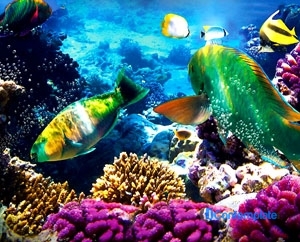<p style="text-align: justify;">You almost certainly have learned that the Australian authorities agreed to a substantial enlargement of the port of Abbot Point. The seaport of this town will be transformed into the world&#8217;s number one coal port, and this development will lead to the extraction of over a hundred million cubic feet of debris from the seabed. This waste will be dropped into the sea close to Australia&#8217;s Great Barrier Reef World Heritage. Just imagine: if all this dredged substance would be put on land, the stack of dirt is going to be bigger than the great Pyramid of Giza in Egypt. The dump of the waste materials in the waters surrounding Australia&#8217;s Great Barrier Reef will endanger the country&#8217;s best tourist attraction, as the Great Barrier Reef is responsible for a turnover of some six billion dollars annually, and disposing of such a massive burden of dirt in this breathtaking marine region is a disgrace and threatens the World Heritage placing of this exceptional region.</p>
<p style="text-align: justify;">As an alternative, there are substantially more desirable options to get rid of the sludge. Nowadays we can come across one of the best and ground breaking dewatering approaches, For example, the geotube-container-technique created by Dutch company Royal TenCate that can very well handle all of the waste materials. TenCate developed the revolutionary geotube system that uses tubular-shaped containers made of permeable geotextiles. All over the world, these containers are used for the best dewatering remedy for waste materials from all sorts of waterways and ports.</p>
<p style="text-align: justify;">The company designed a system which is relatively straightforward: the sludge is stored into containers made out of Geotube textiles. Then ecologically friendly polymers are combined with the waste so the solid materials will bind, the water can seep out of the geotubes, and the solid waste is securely kept in the containers. The geotubes can simply be taken away and used to build dykes, or be transported for removal or additional treatment.</p>
<p style="text-align: justify;">This groundbreaking geotube concept is fairly new and not broadly known, although already used in over two thousand places around the globe. It really is somewhat bizarre that so far nobody has talked about this amazing alternative for handling the waste to prevent it from ruining the fragile ecosystem of the Great Barrier Reef. We should not be accepting the dump of waste materials in this gorgeous region, so let&#8217;s promote this environmentally risk-free option. We now have a chance to rescue Australia&#8217;s Great Barrier Reef by applying this wonderful alternative, so share this great infographic and let the world know that there&#8217;s a far better alternative.</p>
<div style="clear: both; text-align: justify;"><img class="aligncenter" style="border: 0px none;" title="Geotube Technological Innovation Can Save The Great Barrier Reef" src="http://www.brandomni.com/wp-content/uploads/2014/02/save-reef-with-geotube.png" alt="Geotube Technological Innovation Can Save The Great Barrier Reef" width="596" height="1828" border="0" /></div>
<div style="text-align: justify;">Courtesy of: BrandOmni</div>

Geotube Technological Innovation Can Save The Great Barrier Reef
